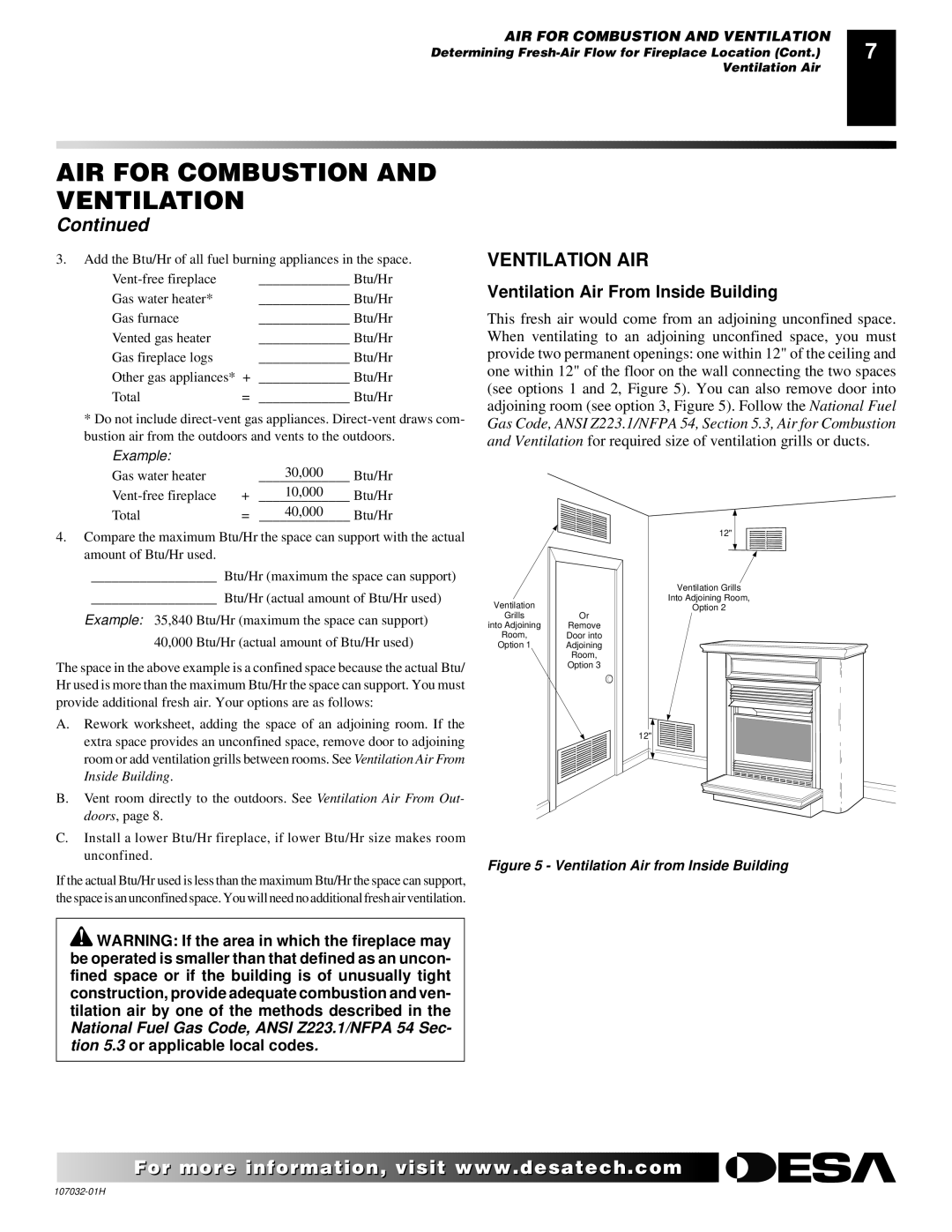EFS10TP, EFS10TN, and EFS26NR specifications
Desa is a recognized leader in the innovation and manufacture of advanced heating solutions designed to deliver optimal performance and efficiency. Among their most notable offerings are the EFS26NR, EFS10TP, and EFS10TN models, each engineered with unique features and technologies to meet diverse heating needs.The EFS26NR is a notable model known for its large heating capacity and effectiveness in maintaining consistent warmth in larger spaces. With a robust output, this unit can efficiently heat areas up to 1,800 square feet, making it suitable for homes or commercial settings. One of the primary characteristics of the EFS26NR is its advanced heating technology, which includes a high-efficiency burner that maximizes fuel usage, reducing operational costs. Additionally, it features a built-in thermostat, providing automated temperature adjustments for enhanced comfort.
On the other hand, the EFS10TP is designed for versatility and practicality. This model is ideal for smaller rooms or as a supplementary heating option. The EFS10TP offers users the convenience of a portable heater equipped with wheels, allowing for easy mobility. This model is equipped with user-friendly controls and a safety shut-off feature, ensuring peace of mind while in use. The EFS10TP utilizes a compact design without sacrificing performance, allowing it to fit seamlessly into various settings.
Similar in size, the EFS10TN focuses on energy efficiency as its main selling point. This model uses a unique infrared heating technology that allows for more direct heating of objects and people rather than warming the air, resulting in lower energy consumption. The EFS10TN is perfect for those looking to reduce their carbon footprint while still achieving a warm, inviting environment. Enhanced safety features such as tip-over protection and overheat shut-off further ensure its suitability for use in homes with children or pets.
Overall, the Desa heating solutions—EFS26NR, EFS10TP, and EFS10TN—each provide distinct advantages tailored to specific heating requirements. With a commitment to innovation, safety, and efficiency, these models are exemplary choices for those seeking dependable and effective heating options. Whether for large areas or cozy spaces, Desa ensures that there is a suitable solution for every heating need.

